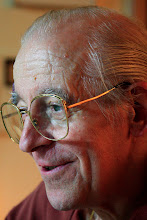A story reported by the BBC a few years ago, The Body Snatchers’: Legacy to Medicine, outlines how essential the cadavers these thieves stole were to medical training at the time. The Irish emigrants William Burke (1792-1829) and William Hare (1792-1804) were one well-known body snatching duo who supplied bodies for medical research to a University of Edinburgh anatomy class. They were paid 7 pounds for each body. At first, they dug up newly buried corpses for the researchers. But as surveillance around graveyards got tighter, Burke—being Hare dead—committed murder to keep up with the demand for corpses. In one year—from November 1827 to October 1928—Burke killed 17 people in a row and sold their bodies to the anatomists. He was eventually caught when a student recognised the cadaver of a prostitute. In a fitting ending, Burke was hanged and his body was handed over to the same anatomy class at the University of Edinburgh as a cadaver.


The Padua University Anatomic Theatre
In Korea, an anatomical chart known as Sinhyongjangbudo is included in Tonguibogam (The Principles and Practices of Eastern Medicine) written by Ho Chun (許浚, 허준, 1546-1615) in the early 17th century. The first modern anatomy class was held at Severance Medical School, the predecessor of Yonsei Medical Centre, in 1910.
Today, scientists get human bodies to study through donations, rather than thieves. In many countries, donating one’s body to science is thought of as a noble contribution to the development of medicine. In Korea, still under a strong influence from Confucianism, means that donations are rare. Medical schools in the Seoul metropolitan area receive only 30 to 80 donated bodies every year. But with videos circulating on the Internet of medical students disrespecting donated cadavers, it is no wonder that Koreans are reluctant to give their bodies to such a cause.
People who are in a profession that deals with human life should be more conscious of ‘the dignity of the human body’ than anyone else.
Giorgio Olivotto
Photo by Giorgio Olivotto
Seoul, Korea
April 11, 2010

Nessun commento:
Posta un commento